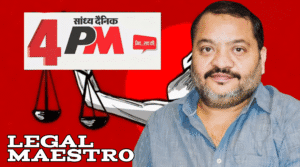Legal Implications of Blocking 4PM News YouTube Channel
When access to a news station is restricted on a digital platform, it presents a number of complicated legal problems that pit the authority of the government against the rights of individuals. An examination of the legislative structure that governs the removal of content is presented in this article. The essay focuses on the Indian context while relying on precedents from other countries. It investigates the reasons why a government would choose to prohibit a news channel on YouTube, the responsibilities of intermediaries under the Information Technology Act, and the constitutional safeguards that preserve the right to freedom of speech and expression. Shreya Singhal v. Union of India, Anuradha Bhasin v. Union of India, and the United States case Packingham v. North Carolina are all examples of landmark judgments that demonstrate how courts have struck a balance between the interests of the state and fundamental rights pertaining to individuals. The analysis highlights the importance of transparency, due process, and procedural fairness in any content-blocking regime that may be implemented.
